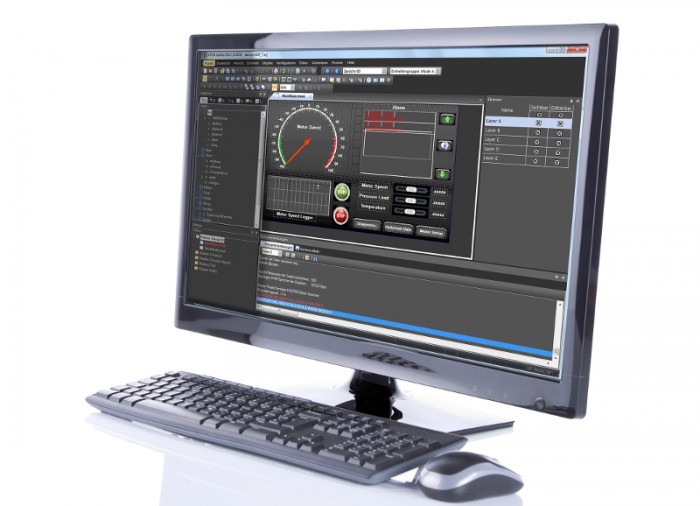New version of Eaton’s Galileo allows faster and more efficient project development

Galileo is an intuitive visualization software that is quick to learn, powerful and sector-neutral, considerably reducing the time required for the project design and commissioning of Eaton XV and XP series touch panels.
Photo by Eaton Corporation
Power management company Eaton has released a new version of its highly successful Galileo project design software environment that enables users to develop projects faster, more efficiently and more reliably. Like its predecessors, Galileo 10 provides a unified project development platform for XV and XP series touch panels, as well as for PC runtime solutions for machine control and visualisation.
Designed specifically to meet the needs of machine builders, Galileo 10 incorporates new features that simplify the programming and maintenance of control systems over the whole life cycle of the machines and plant, from initial design through to commissioning and beyond.
Users of earlier versions of Galileo can upgrade their devices and projects quickly, conveniently and at no extra cost thanks to the full compatibility of the new version.
Galileo 10 software is tailor made for the international machine building market, with new functions that offer big time savings, particularly in the project design and commissioning phases.
For example, when the user clicks on an object or symbol, its key attributes are instantly displayed in a sidebar. This greatly reduces the number of mouse clicks needed, speeding up the whole project design process. Other new timesaving features include smart search and sort functions that allow screens, variables, bitmaps and scripts used in projects to be found quickly and easily.
The operating concept of Galileo 10 is clear and user friendly. Automatic object recognition allows all objects on the screen to be easily positioned and aligned, while the use of styles guarantees the uniform appearance of objects across the whole project.
Variables and objects can be copied between projects, and are assigned simply by dragging and dropping. Undo and redo functions allow errors to be rectified without the need for time-consuming corrective work. Users can even switch between 4:3 and 16:9 display formats while a project is running.
To maximise the versatility and usefulness of Galileo 10, it includes a simple variable import function for the Codesys 2 and Codesys 3 development environments, and for Siemens software.
The new Galileo 10 software release offers greater efficiency and safety not only during project development, but also during plant and machine operation and maintenance. Systems can be operated intuitively with swipe-and-scroll gesture control. A built-in user logger records value changes and tasks performed by each user and stores them in a CSV file to guard against unauthorised manipulation.
To provide additional security, an automatic logout function is provided and monitoring of invalid login attempts can be implemented. Password history is also recorded and password ageing is monitored. An alarm manager logs errors with a timestamp, assigns them to one of three alarm groups and creates an error history. Galileo 10 users are further supported during maintenance operations by a user-friendly help system.
Galileo 10 is a powerful yet intuitive project design environment that is sector-neutral and quick to learn, and it provides all of the features needed for local operation of machines. Ready-to-use functions and objects make it easy for users to design and test projects for XV and XP touch panels to match their own exact requirements. And, thanks to the wide compatibility of Galileo 10, machine builders can also use it in conjunction with Eaton HMI and HMI/PLC units for retrofit projects.
Since its introduction in 1995, Eaton has consistently supported and developed the Galileo software environment to meet the needs of the machine building sector.
For more information, please visit http://www.eaton.eu.
News Categories
- » NEWS HOME
- » Automation & Robotics
- » Industry 4.0
- » Material Handling
- » Sensors
- » Quality & Testing
- » Machine Vision
- » Laser & Optics
- » Metalworking
- » Motion Control & Drives
- » Hydraulics & Pneumatics
- » Process Industry
- » Renewable Energy
- » Agriculture
- » Home & Office Furniture
- » Environmental Tech




